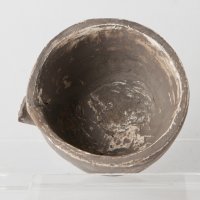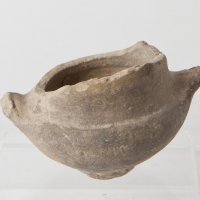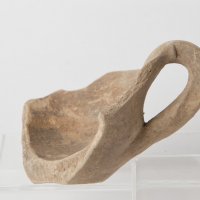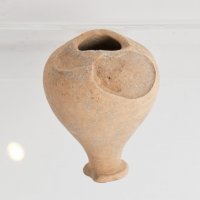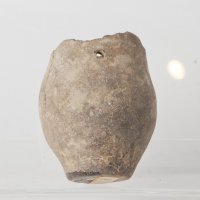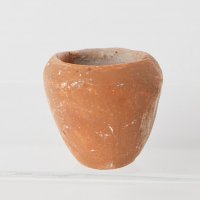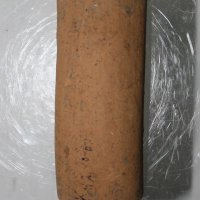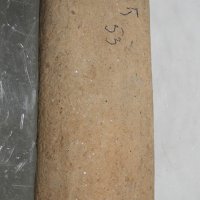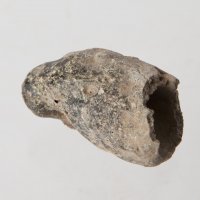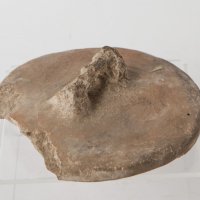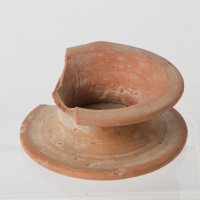Antiquity
Експонати
История
THRACIANS
The transition between the Stone-Copper and Bronze Ages (the end of the IV – the beginning of the III millennium BC) marked the dynamics of the ethno-genetic processes that led to the formation of different tribal communities populating the Balkan Peninsula, more specifically – the Thracians.
The geographical borders of the territory, on which the Thracian ethnicity was formed, include the river valleys of Struma and Vardar to the South-West, the islands of Thasos and Samothraki, together with the Hellespont shore to the South, Northwestern Mala Asia to the South-East, the valleys of Dnepr and Dniester to the North-East and the Carpathian Mountains go the North and North-Western direction.
The transition between the Bronze and Iron Ages (ХIII-ХII century BC) marked the Aegean migration of peoples. The Thracians were an inseparable part of these processes with their migrations being internal, i.e. it took place within the territory they already inhabited. Thus, the approximate location of the Thracian tribes in the borders described in ancient sources of information from VI-V century BC, began to outline itself steadily.
The introduction of iron led to constant social and economic changes in the Thracian society. By the second half of VI century BC the dynamics of the social events had led to the appearance of several state formations of the Thracians, one of which took place on the territory of South-Eastern Thrace – the military unification of the Odryssae.
As a result of the developing state forms and intensive trade contacts with the Greek colonies, urbanization processes also began to take place alongside the seacoast. They were most dynamic during IV century and the first half of III century BC. One of the Odryssae’s town centers – Sevtopolis, which was found on the territory of the Kazanlak valley, is dated back to that time. Inseparable parts of the Thracian culture in the valley are also the numerous mounds, inside some of which archeologists have discovered some of the richest funerals and monumental tombs throughout the whole of Thrace.
Information about a tombs located in the valley of roses and the thracian kings. Vessels and weapons.
SEUTHOPOLIS
In the course of seven years an extensive research team led by Prof. Dimitar P. Dimitrov conducted rescue excavations of a Thracian town. After the discovery of a large marble inscription it became clear that the name of the town is Seuthopolis. The inscription reflects the contractual relations between Seuthes` heirs and Spartok, dynast of Kabyle (near present day town of Yambol).
The remains of Seuthopolis are located about 8 km west of Kazanlak. The town was built on the ruins of a prior existing fortified royal residence. It was lacated on a small peninsula surrounded to the west and south by Tonzor River (today's Tundzha) and to the east by its tributary, Golyama Varovite (Big Lime River).
The fortress walls outline a irregular pentagon with an area of 50 decares. The urban plan is based on the Hippodamus cinstruction system typical of the Hellenic cities. Streets intersect at right angles, one of them running along the fortress wall. Two of the streets are wider than the rest and lead to the city gates. Neighborhoods lying in-between the interesecting streets are rectangular-shaped, each with 2 or 3 spacious residential houses with large patios. Their soundations are built of stones cemented with mud, the superstructure being rather flimsy. The floors are made of rammed clay, with broken tiles and broken pottery used at places. Almost every house has a clay ground above the floor level serving as an altar associated with various domestic cults.
Important place in the city plan is occupy by the agora (the square), where the two main streets intersect. According to another inscriptions discovered by the excavation works, in the agore there used to be a sanctuary of Dionysus. The Seutopolis citadel, erected in the northern part of the city, served as an inner fortress. At the far and if this neighborhood there is a fortified palace, which is the largest building in the city, featuring a complex structure and rich interior decoration.
Seuthopolis is not only the administrative and religious center of Seuthes' state, but also a city of great economic significance. Besides vessels and objects produced locally, evidencing of the high economic upswing are also the discovered products in import. Coins of Philip II of Macedonia and Alexander the Great used to circulate in the city, but most numerous among the finds are the coins minted by Seuthes - more than 800 pieces. Archaeological and numismatic materials indicate that the city extinguished as a capital in the 60s of the IIIrd century BC.
The city, already explored, remains under the waters of Koprinka dam. It can however become a unique museum in the open. A draft plan for the exposition of Seuthopolis provides for recapturing from the dam an area of 60 decares by constructing an internal wall to create a kind of well, on the bottom of which one can see the ruins on the ancient city. Аrchitect Zheko Tilev.
ROMAN ERA
In 45 BC Thrace became a Roman province. At the time of the Early Empire /Principat/ the closest big administrative center in the region was Augusta Trayana. On the territory of the Kazanlak valley there were probably small satellite villages, indirect proofs of which are the examined mounds from the Roman Era. It is worth noting that those were located in the Eastern half of the valley. During the 50s of the XX century scientists examined two sanctuaries from the same age near the village of Viden and the town of Kran.
Among the exhibits in the Iskra historical museum one can find objects from discovered funerals – ceramic, metal and glass utensils, ceramic lamps; object related to clothing – parts of a toilet chest, keys, strigils. Chariot elements are also exhibited – metal wheel-rims and an iron chair of a province administrator.
A special spot is dedicated to the consecrated plates found in the two sanctuaries. The majority of them were dedicated to the Thracian horseman – Heros.
